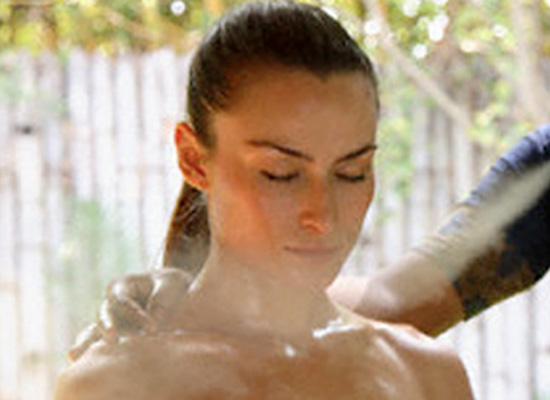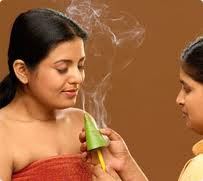Dhoomapaana (Medicated Smoking)

Prakaara Paribhaashaa:
- The inhalation of medicated smoke through mouth is termed as Dhoomapaana.
Types:
- Praayogika / S`hamana
- Snaihika
- Vairechanika
- Kaasaghna
- Vaamaneeya / Vaamaka
- Snigdha
- Madhyama
- Teekshn`a
Pradhaanakarma:
- The procedure should be done after
- Meal
- Yawning
- Defecation
- Micturition
- Sexual act
- S`hastrakarma
- Laughing
- Danta Dhaavana
- The patient should sit erect on a seat comfortably.
- He should be advised to look downwards and inhale the smoke.
- The smoke should be inhaled through mouth initially and then through nose.
- It should always be exhaled through mouth and never through nose because there is a likelihood of harm to the vision.
- Smoking can be done by following two methods –
- The Dhoomavarti should be kept inside the distal opening of Dhoomanetra and ignited. The smoke should be inhaled through the proximal end.
- The hollow Dhoomavarti should be ignited at one end and smoke is inhaled by keeping the other end inside mouth directly without the Dhoomanetra.
- The Kaasaghna and Vaamaneeya type of Dhooma should be inhaled by following method – The medicine is put over the glowing embers taken inside a flat earthen utensil. When adequate amount of smoke is formed then the previous utensil is covered by another one having a hole in it. The Dhoomanetra is attached to the hole and smoke is inhaled.
- The Vairechanika and Praayogika types of smoke should be inhaled by nose
- The Snaihika type of smoke can be inhaled by nose or by mouth.
- The Kaasaghna and Vaamaneeya types of smoke should be inhaled through mouth only.
- Madhyama Dhoomapaana is indicated in:
o Vaata Kaphaja Vyaadhi
o Kshut Pas`hchaat
o Jrumbita Pas`hchaat
o Vit Tyaaga Pas`hchaat
o Mootra Tyaaga Pas`hchaat
o Maithuna Pas`hchaat
o Shastra Karma Pas`hchaat
o Haasya Pas`hchaat
o Dantadhaavana Pas`hchaat
o Nis`haa kaala
o Bhojana Pas`hchaat
o Nasya Pas`hchaat
- Teekshn`a Dhoomapaana is indicated in:
o Kaphaja Vyaadhi
o Nidraa Pas`hchaat
o Nasya Pas`hchaat
o Anjana Pas`hchaat
o Snaana Pas`hchaat
o Vamana Pas`hchaat
Other Description:
- If Kaphaja Pratis`hyaaya, Pootinasya, Naasaa Sraava and Apeenasa are associated with Kan`d`oo then they should be treated with Dhooma of Kat`u Dravya.

